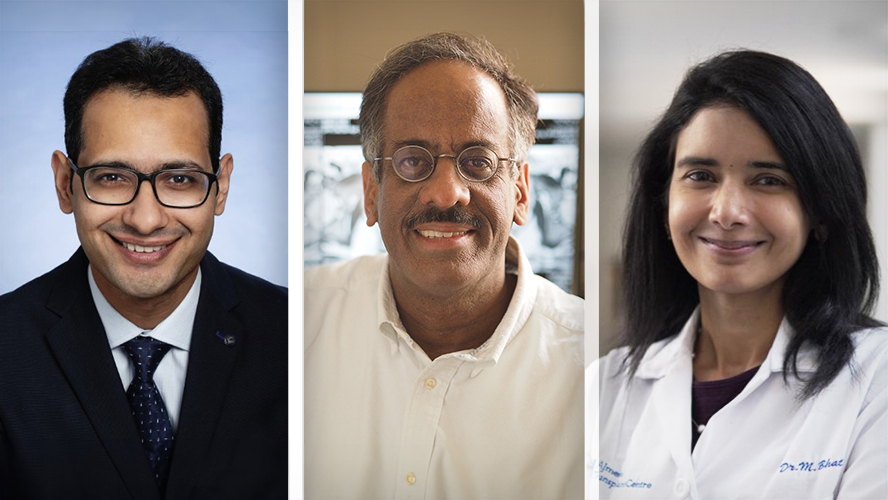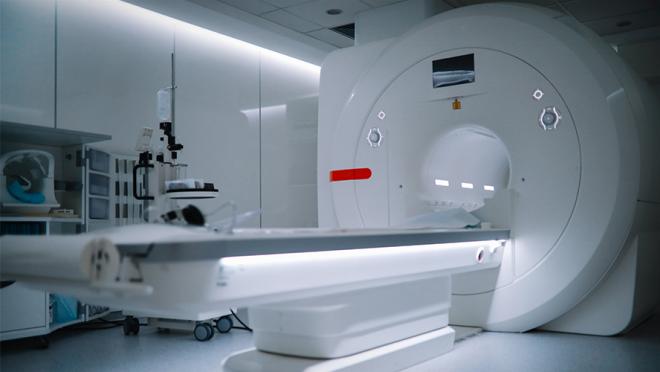
Researchers from Toronto General Hospital Research Institute (TGHRI) and the Ajmera Transplant Centre have developed a model to predict liver complications following transplant.
Recurrent liver fibrosis—the formation of scar tissue in the liver due to persistent injury or inflammation—occurs in 40% of patients who have received a liver transplant. This recurrent fibrosis, also called graft fibrosis, is a significant factor impacting long term patient survival following transplant.
“In order to treat patients while preventative interventions are possible, more robust, non-invasive tools are required to identify those at the highest risk of developing advanced graft fibrosis,” says Dr. Mamatha Bhat, Scientist at TGHRI and the Ajmera Transplant Centre.
To examine how to better predict liver fibrosis, the researchers turned to radiomics—a method of converting medical images such as those from computed tomography (CT) scans into quantitative data followed by data analysis. While radiomics has been used to assess fibrosis in chronic liver disease, there have been no studies on its use post-transplant to predict fibrosis in solid organ transplant recipients.
“In this study, we evaluated a radiomics-based model to predict fibrosis following transplant,” says Dr. Fakhar Ali Qazi Arisar, former clinical fellow in Transplant Hepatology at the Ajmera Transplant Centre and TGHRI. “We analyzed CT scans of 254 patients at 3-6 months following liver transplant using an artificial intelligence-based tool called PyRadiomics. We then developed models for predicting graft fibrosis using radiomics as well as laboratory and clinical data.”
The researchers were able to show that some clinical parameters (e.g., donor and recipient age, cause of liver disease, recurrence of disease, etc.) as well as radiomic features (e.g., a CT scan feature called ‘maximum liver attenuation’) were significantly associated with an incidence of liver fibrosis following transplant.
“We found that while clinical features were able to predict the future development of graft fibrosis, the addition of radiomic features increased this predictive power within our model,” says Dr. Masoom Haider, Clinician Scientist at Princess Margaret Cancer Centre and Senior Clinician Scientist at the Lunenfeld-Tanenbaum Research Institute. “This pilot study demonstrates that radiomics can help clinicians identify when preventative measures are necessary to prevent the onset of graft fibrosis.”
Based on these findings, clinicians may consider closer monitoring of the liver in patients who have high-risk radiomic features and clinically predictive features. Further studies will be able to expand on this use of radiomics as a predictive tool following liver transplant.
This work was supported by UHN Foundation and the Ajmera Transplant Centre.
Dr. Bhat is an Associate Professor in the Department of Medicine at the University of Toronto (UofT). Dr. Haider is a Professor in the Department of Medical Imaging at UofT.
Qazi Arisar FA, Salinas-Miranda E, Ale Ali H, Lajkosz K, Chen C, Azhie A, Healy GM, Deniffel D, Haider MA, Bhat M. Development of a Radiomics-Based Model to Predict Graft Fibrosis in Liver Transplant Recipients: A Pilot Study. Transpl Int. 2023 Sep 1;36:11149.

A CT scan is a diagnostic imaging procedure that produces images of the inside of the body including bones, muscles, fat, organs and blood vessels. CT scans may be used following transplant procedures to detect complications.




